By John Gilstrap (Only my wife still calls me Johnny)
Last Saturday was the night of our annual Christmas party. It’s a catered event in our home where we host about 100 friends for an evening of food, drink and frivolity. Things were just getting started–I was taking coats at door and directing people to the various bars and food stations–when my wife’s urgent cries drew my attention to a 12-inch-high patch of flames on the dining room table.
“Oh, bother,” I said–or something like that. A lit taper had fallen from its base and had set the linen table runner alight. Linen burns pretty well with a bit of paraffin accelerant. However, it extinguishes quickly when you drown it with the water from a chafing dish. Thinking quickly, the caterer then covered the burn mark with a serving dish and the party was back on track.
About 18 hours have passed as I write this, and I realize that some blog topics are ordained. So buckle up as I set my writing creds aside and return to my previous line of work. For newcomers, that means 15 years in the fire and rescue service and 35 years as a safety engineer specializing in things that burn.
First, this video is mandatory. The first ten seconds or so will do. Go ahead. I’ll wait.
Welcome back. Nothing about that video was doctored. Dry pine burns almost explosively, and it doesn’t care if it’s part of a tree, a wreath or a centerpiece. It also burns very hot. If the fire in the video had been in a real house, those superheated gases would have ignited all the furniture and wall coverings, creating an even hotter plume of gases that would have mushroomed along the ceiling to the rest of the house, self-propagating by all the additional items and structural members it ignited along the way. If it were a two-story house, the stairway would have been the internal chimney, and the Beast would have fed on everything up there.
Sobering Fact #1: You don’t have time. The Beast is coming, and you can’t stop it. Even if it’s not true in your one-off case, you have to assume it is true. If it’s after bedtime, and the smoke detector sounds, your reflex should be to call 9-1-1. If you live in an area that has “enhanced 9-1-1” service, you don’t even need to speak to anyone. The computer will know your address and the audio will tell the call taker everything they need to know. If it turns out to be a nothing burger of a call, well, that’s good news for everyone. Your house won’t have burned and the firefighters won’t have had to clean their equipment.
Sobering Fact #2: Everybody’s instincts are wrong.
- You keep your and the kids’ bedroom doors open because you want to hear problems. Remember the Beast in the hallway? He kills with his breath, not with his claws. Not only is he consuming all of the oxygen from the air, but the products of combustion from all that furniture and structural material are toxifying it with carbon monoxide and phosgene and oxides of nitrogen and God knows what else. Some of these gases are toxic at parts per billion, and if bedroom doors are open, they’re rolling right in. A closed bedroom door adds as much as 10 minutes of survival time in a house fire. Give the firefighters a chance to make a rescue instead of a recovery.
- You think you’re going to have time to rescue your kids from down the hall. You’re wrong. At least, you have to plan to be wrong. See everything written above. Honestly, you don’t comprehend how geometrically the Beast grows once he gets started. Dying in the hallway during a rescue attempt is not a rescue. It’s a tragedy. Likely part of a larger one.
- Your kids are going to run to you for help when things get scary. I don’t even want to write the rest. Read the paragraph above and extrapolate. Hands down, the worst day of my fire service life was when I found the bodies of two children under their parents’ bed. A part of me broke that night that still hasn’t healed.
Elements of a Fire Evacuation Plan
- Every room has a way out–ideally, two.
- If the CLOSED bedroom door is hot to the touch, the Beast is out there waiting to kill you. Don’t open it.
- OPTION 1: If it’s safe, climb out a window.
- Are your kids big enough/strong enough to open the window?
- Do they know it’s okay to break the window if they can’t open it? (You need to tell them very specifically that it is permissible because you’ve spent their whole lives making it clear that windows are NOT to be broken.)
- Is there a designated implement nearby that they can use to break the window?
- OPTION 2: If the Beast is outside the door and window egress is unsafe, the only option is to stay put and await rescue.
- Stay low and in plain sight
- Make lots of noise. (Bedside whistles are a great idea.)
- OPTION 1: If it’s safe, climb out a window.
- If the CLOSED bedroom door is hot to the touch, the Beast is out there waiting to kill you. Don’t open it.
- Establish a meeting place outside and once there, stay there.
- Do not hesitate. Hear the smoke detector, activate the plan.
Please consider this post to be my Christmas message of love.
We’re all extended family here at the Killzone Blog, and it so happens that the season of God’s greatest gift to mankind coincides in the Northern Hemisphere with the time of year when we stack the rules of chemistry and physics against ourselves by placing uniquely combustible fuels in close proximity to efficient ignition sources. There’s a reason why first responders refer to this time of year as Fire Season.
I don’t want to stress you out, but I do want all of you to take a look at every single display in your home. If having a real tree is important to you (or any real greens for that matter), make sure that they are moist and well away from direct sources of heat. Keep a pitcher of water near the fireplace in case a log falls out. You just have to cool it off enough to get it back into the fire box with the tongs. There’s no need to extinguish the fire in the fire box before you go to bed, but make sure that the logs are stable and won’t fall.
Candles out before bed. All of them. Don’t make me come over there and give you a talking to.
With all that lecturing behind me, I wish you all a wonderful Holiday Season, and I will see you on the far side of our annual hiatus!

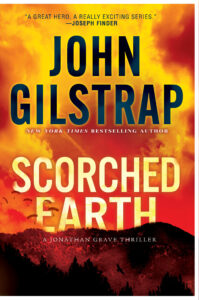 This coming February, when
This coming February, when 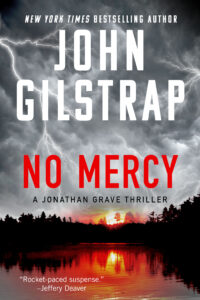 The format change has provided an excuse to re-release all of my Grave series in trade paper format. No Mercy and Hostage Zero will hit the stands at the same time as Scorched Earth. While all the concerns remain, it’ll be nice to see out-of-print titles returning to the shelves.
The format change has provided an excuse to re-release all of my Grave series in trade paper format. No Mercy and Hostage Zero will hit the stands at the same time as Scorched Earth. While all the concerns remain, it’ll be nice to see out-of-print titles returning to the shelves.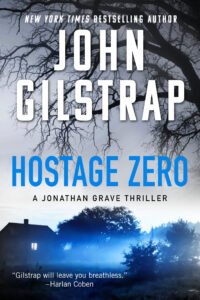 This brings us to the importance of pre-orders. I’m not a “please buy my book” kind of guy. I figure that if you have to beg, something’s wrong. In fact, I don’t even bring books with me to sell when I teach workshops. First and foremost, I’m not set up to be a retailer and have no desire to manage another layer of taxation. But also, I figure if I do my job right, people will be inspired to buy my books from a bookstore, or to borrow them from a library.
This brings us to the importance of pre-orders. I’m not a “please buy my book” kind of guy. I figure that if you have to beg, something’s wrong. In fact, I don’t even bring books with me to sell when I teach workshops. First and foremost, I’m not set up to be a retailer and have no desire to manage another layer of taxation. But also, I figure if I do my job right, people will be inspired to buy my books from a bookstore, or to borrow them from a library.


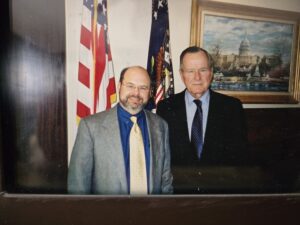
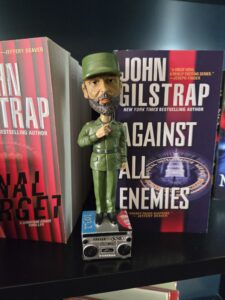



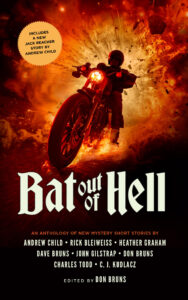 “All Revved . . .” is, hands down, the darkest story I’ve ever written. You can find it in the recently published anthology,
“All Revved . . .” is, hands down, the darkest story I’ve ever written. You can find it in the recently published anthology,